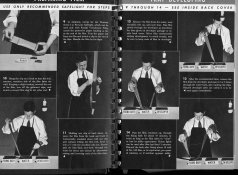Photo Engineer
Subscriber
Dyes in film are of 3 types, Sensitizing dyes, Acutance dyes, and Antihalation dyes.
Antihalation dyes are best coated on the back of the support or in a layer underneath the emulsion layer. We know what they are for. Acutance dyes are dyes that prevent internal reflections and add sharpness to the image thereby. Both of these dyes can wash out immediately.
Sensitizing dyes are adsorbed tightly to the emulsion grains. As such they don't wash out except from developed grains, and even then they can stick to the Silver metal. These give some films a pink or gray color after fixing, if the fix is bad or short. They usually wash out in the final wash or in the wash aid.
Many types of these dyes are destroyed during processing in one way or another.
PE
Antihalation dyes are best coated on the back of the support or in a layer underneath the emulsion layer. We know what they are for. Acutance dyes are dyes that prevent internal reflections and add sharpness to the image thereby. Both of these dyes can wash out immediately.
Sensitizing dyes are adsorbed tightly to the emulsion grains. As such they don't wash out except from developed grains, and even then they can stick to the Silver metal. These give some films a pink or gray color after fixing, if the fix is bad or short. They usually wash out in the final wash or in the wash aid.
Many types of these dyes are destroyed during processing in one way or another.
PE















